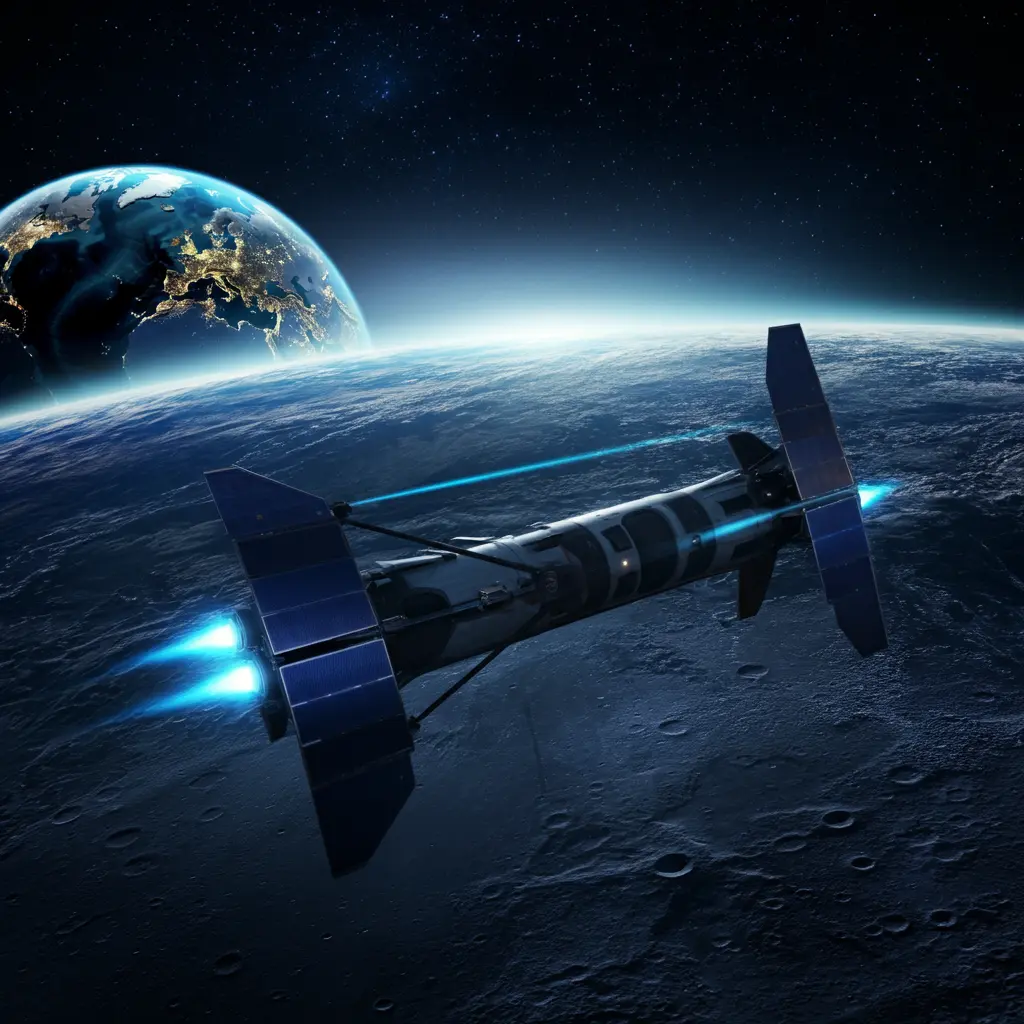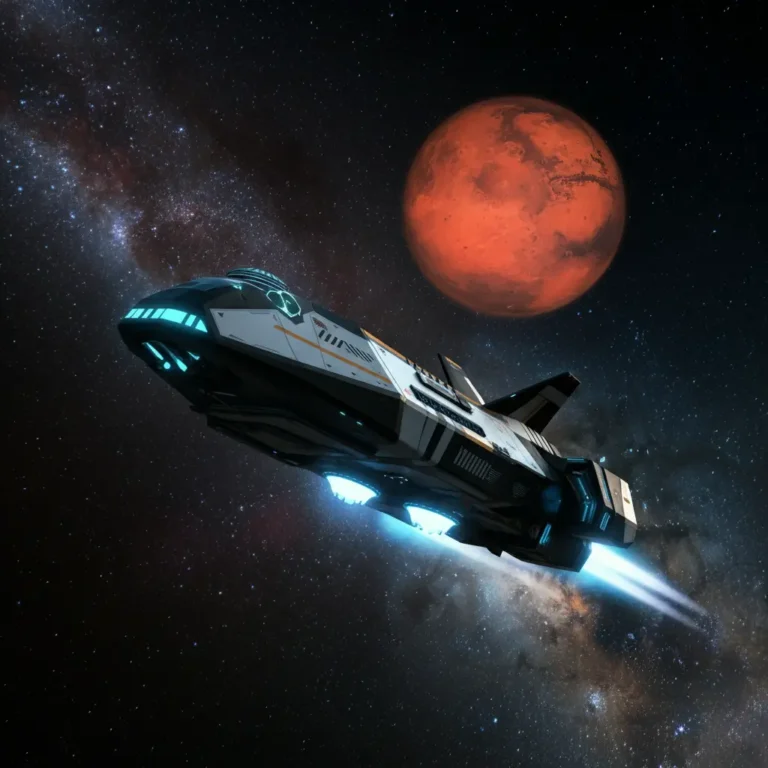How Long Does It Take to Get to the Moon?
The Moon, our celestial neighbour, has fascinated humanity for centuries. Questions about the Moon are never-ending, from its surface characteristics to the time it takes actually to reach it. But when we go beyond the basics, such as how long it takes to get there, other considerations emerge, especially regarding human health and the challenges astronauts face during the trip. This article explores the complexities of lunar travel, with a focus on the human body and its well-being throughout the remarkable 240,000-mile (386,400 km) trip.
Table of Contents
How Far Is the Moon?
The Moon is about 240,000 miles (386,400 kilometres) from Earth on average. However, this distance isn’t constant due to the Moon’s elliptical orbit. It can range from 225,623 miles (363,104 kilometres) at its closest (perigee) to 252,088 miles (405,696 kilometres) at its farthest (apogee).
This distance is significant but achievable thanks to the science of orbital mechanics—a calculated path spacecraft follow to minimize fuel consumption while maximizing speed.
How Long Does It Take to Travel to the Moon?
Typically, a spacecraft takes about three days to reach the Moon. This speed involves travelling roughly 3,333 miles per hour (5,364 kilometres per hour). However, the exact time depends on variables like the trajectory, spacecraft type, and mission objectives.
Unmanned missions, such as the New Horizons spacecraft, have reached the Moon in as little as 8 hours due to their high speeds en route to farther destinations. However, manned missions prioritize astronaut safety and fuel efficiency, which lengthens the trip.
Historical Apollo Missions and Travel Duration
The Apollo program by NASA remains the benchmark for manned lunar missions. Here’s a snapshot:
- Apollo 11 (1969): The first humans landed on the Moon after spending 3 days, 3 hours, and 49 minutes in space.
- Apollo 12 to Apollo 17 (1969–1972): Travel times for these missions fluctuated slightly but generally mirrored Apollo 11’s schedule.
The Apollo missions used a “free-return trajectory” to ensure the spacecraft would loop back to Earth in case of engine failure. This safety features slightly extended travel time but provides an essential fail-safe mechanism.
Impact of Space Travel on the Human Body
Space travel is a profound challenge for the human body, especially when leaving the Earth’s protective magnetic field. Here are several key effects:
- Microgravity: Floating in a near-zero-gravity environment alters muscle and bone structure, leading to loss of bone density and muscle mass.
- Radiation Exposure: Without the shield of Earth’s atmosphere, astronauts are exposed to cosmic rays and solar radiation.
- Cardiovascular Strain: The lack of gravity causes fluid shifts in the body, placing strain on the heart, which must work harder to pump blood.
Common Health Risks During a Moon Journey
Spending three days in space comes with unique health risks. Some of the most common issues include:
- Motion Sickness: Often referred to as Space Adaptation Syndrome, this condition can cause nausea and vomiting during the first few days in zero gravity.
- Radiation Damage: Prolonged exposure, even during short trips, can harm cells and DNA, increasing cancer risks.
- Psychological Strain: Isolation and confinement can lead to stress and decreased cognitive function.
- Muscular Atrophy: Even a few days in zero gravity can reduce muscle strength if exercise isn’t performed.
How Astronauts Stay Healthy on Their Way to the Moon
Several measures are implemented to maintain astronaut health during lunar missions:
- Rigorous Exercise Routines: Spacecraft are equipped with compact treadmills or cycling machines to combat muscle loss.
- Specialized Diets: Astronauts consume nutrient-rich meals designed to provide energy and counteract deficiencies.
- Radiation Shields: Walls of spacecraft are made to minimize radiation exposure.
- Mental Health Support: Communication with loved ones and mission control provides much-needed emotional support.
Future Lunar Missions and Travel Time
Future missions, like NASA’s Artemis program, aim to reduce travel time using more efficient propulsion systems. A mission to the Moon may be possible in under two days. Additionally, advancements in materials and navigation systems are paving the way for faster and safer lunar journeys.
Mental Health Challenges in Space Travel
Being confined in a small spacecraft for days can take a toll on mental health. Astronauts may experience anxiety, difficulty sleeping, or even depression due to isolation. Strategies to mitigate these issues include mindfulness training, good sleep hygiene, and creating structured daily routines.
How Technological Advances Are Reducing Risks
Modern spacecraft are being designed with astronaut health in mind. For example:
- Orion capsule (NASA): Features enhanced radiation shielding and life-support upgrades for crew safety.
- Advanced propulsion: Ion engines and other technologies promise to cut travel time and reduce exposure to space hazards.
- Wearable health monitors: Astronauts now wear devices that track vitals, allowing for real-time medical support.
Why Lunar Missions Are Important for Medical Science
These missions provide more than just exploration; they offer insights into how the human body adapts to extreme conditions. Medical research aboard spacecraft has led to advancements in diagnosing and treating osteoporosis, cardiovascular disease, and even mental health disorders.
The Role of Nutrition in a Moon Mission
Food plays a vital role in maintaining health during the trip. Meals are designed with:
- Caloric Efficiency: Enough energy to sustain the body in microgravity.
- Micronutrients: Extra calcium and vitamin D to counteract bone density loss.
- Convenience: Pre-packaged meals save space while ensuring hygiene.
Frequently Asked Questions
How far is the Moon in miles?
The Moon is roughly 240,000 miles away from Earth.
Can you reach the Moon in a day?
Not with current manned spacecraft. While faster engines could make the trip possible, safety considerations currently require about three days.
How do astronauts stay fit on their way to the Moon?
Astronauts exercise regularly using specialized equipment to maintain muscle and bone health. These routines are crucial for preventing atrophy in zero gravity.
Is radiation a concern during space travel?
Yes, especially when astronauts are outside Earth’s magnetic field. However, spacecraft are designed to minimize the impacts of solar and cosmic radiation.
Space exploration is as much a journey of discovery as it is a testament to human resilience. While the Moon isn’t far by cosmic standards, preparing for its challenges requires a deep understanding of science, technology, and health.



